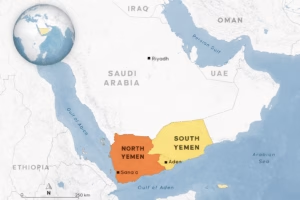YouTube, the world’s largest video-sharing platform, offers a unique opportunity for creators to earn money by uploading content that attracts views, engagement, and advertisers. However, the financial landscape for YouTube creators varies greatly depending on a range of factors, including geography, audience demographics, and content type. South Africa is one of the emerging markets where YouTube’s potential as a source of income is growing, but how much do South African creators actually earn from the platform?
In this article, we explore the intricacies of YouTube’s monetization system in South Africa, breaking down factors like CPM (cost per mille or cost per 1,000 impressions), YouTube’s partner program, and alternative revenue streams available to South African content creators. By the end, we hope to answer the question: How much does YouTube pay in South Africa, and is it a viable career path?
How YouTube Pays Creators: The Basics
Before delving into the specifics of South African YouTubers’ earnings, it’s essential to understand how YouTube’s payment system works globally. YouTube’s primary monetization system revolves around the YouTube Partner Program (YPP), which allows creators to earn money through advertisements placed on their videos. To be eligible for YPP, a creator must have:
- At least 1,000 subscribers
- A minimum of 4,000 valid public watch hours over the last 12 months
- Adherence to YouTube’s community guidelines and monetization policies
- Once a creator qualifies for YPP, they can start earning revenue through Google AdSense. AdSense calculates earnings based on a metric called CPM, which represents the amount advertisers are willing to pay for 1,000 ad impressions on a video. The CPM varies depending on a host of factors, including the geographical location of the viewer, the type of ad, and the content of the video.
Understanding CPM in South Africa
CPM rates differ from country to country, and South Africa, like many other developing nations, generally sees lower CPM rates compared to more affluent regions like the United States or Western Europe. In 2024, South African YouTubers typically experience CPM rates ranging from $0.50 to $4.00 per 1,000 views, depending on the content’s niche and audience demographics.
Content that appeals to international audiences or focuses on lucrative sectors such as finance, technology, or entrepreneurship tends to command higher CPM rates, sometimes reaching $8-$10 per 1,000 views. Conversely, entertainment content, music, and vlogs may see lower CPM rates, especially if their audience is primarily local.
For example, a creator producing tech reviews or financial advice videos may attract advertisers willing to pay more because the audience is likely to have higher purchasing power. On the other hand, content aimed at casual entertainment may not draw in the same high-paying advertisers.
How Much Can South African Creators Make Per View?
To estimate how much a South African YouTuber can earn per view, let’s break down the numbers based on CPM. Assume an average CPM of $2.50. If a YouTube video gets 100,000 views, the calculation is as follows:
Total CPM: 100,000 views ÷ 1,000 = 100 CPMs
Total earnings: 100 CPMs × $2.50 = $250
However, it’s important to remember that YouTube takes a cut of the advertising revenue—45%, to be precise. This means the creator would receive 55% of the total earnings:
Creator’s share: 55% of $250 = $137.50
Thus, a video with 100,000 views might earn a South African creator approximately $137.50 based on a CPM of $2.50. It’s clear that to make a substantial income from YouTube ads alone, a creator needs to generate millions of views consistently.
The potential earnings of YouTubers have sparked widespread interest among internet users and aspiring creators, with many questioning how much they can earn and the factors that influence their income on the platform. For South African content creators, these figures reveal a vast range, shaped by audience engagement, viewership, and other metrics.
The Earnings Spectrum for South African YouTubers
Data from Social Blade, a social media analytics platform, indicates that South Africa’s top YouTubers can earn anywhere between R1,826 and an impressive R1,402,918 per month. These earnings reflect a stark contrast between the potential of larger, established channels and those still growing.
For smaller creators, the financial rewards may be more modest. A channel with approximately 2,000 subscribers and 10,000 monthly views typically earns around R400 per month. The lower earnings are attributed to fewer impressions and limited advertisements displayed on their videos.
A Global Shift: YouTube as a Career Platform
Globally, YouTube has evolved far beyond a space for sharing videos. With over 2 billion active users each month, it has become a highly profitable career option for creators, offering opportunities for income through ad revenue, sponsorships, and other streams.
In South Africa, the creator economy is growing steadily. While not every YouTuber may achieve top-tier earnings, the platform offers considerable potential for those willing to invest in producing high-quality content, maintaining consistency, and building a loyal audience.
Key Metrics Determining YouTube Earnings
According to Social Blade, there are five primary factors that influence how much money a YouTuber can make:
“There are five main metrics used to determine the earnings of a YouTube channel.”
While these metrics were not explicitly outlined in the data provided, YouTube’s monetisation model typically considers factors such as:
- Subscriber Count: A larger subscriber base often leads to higher earnings potential, but this alone is not sufficient.
- Video Views: Ad revenue is closely tied to the number of views a video receives.
- Audience Demographics: Advertisers value specific audiences, such as those with high purchasing power or niche interests.
- Engagement Rates: High engagement through likes, comments, and shares can boost visibility and attract advertisers.
- Content Niche: Some niches, like tech reviews or financial advice, attract higher ad rates compared to others.
So how do YouTubers earn money online?
Ad Revenue (YouTube Partner Program)
The primary source of income is ad revenue. Creators earn from advertisements displayed during their videos.
Revenue depends on the CPM (Cost Per Thousand Impressions). This is how much advertisers are willing to pay per 1,000 views.
The average CPM in South Africa ranges from R8.50 to R53.79, depending on the niche and engagement.
Views
The most basic factor. More views typically translate to more opportunities for ads to be displayed and watched, directly impacting potential earnings.
Sponsorships and Brand Deals
To diversify income streams, many creators partner with brands to feature products or services in their YouTube videos.
These deals can range from a few thousand rands for smaller channels to hundreds of thousands for top-tier influencers and creators.
Channel Memberships
Creators with eligible channels can offer their subscribers an option to pay a monthly fee. This works well for YouTubers with highly engaged audiences who want exclusive perks.
Factors that can affect YouTube earnings
Niche is the most common factor to take into account for creators venturing into YouTube. Educational, financial, beauty & lifestyle as well as tech content tend to have higher CPM rates due to advertiser demand.
South African content creators are making waves on YouTube, earning substantial incomes from their channels. One of the leading figures in this space is MacG, whose real name is Macgyver Mukwevho. Known for his engaging podcast content, MacG boasts an impressive 1.4 million subscribers and earns an estimated R610,000 per month, according to analytics platform Social Blade.
Following closely behind is Ghost Hlubi, an entertainment creator with 890,000 subscribers. His monthly earnings are projected to reach up to R375,000, demonstrating the profitability of high-quality entertainment content in the digital age.
In a slightly different tier is Lerato Nxumalo, whose earnings are estimated at R72,000 per month. While this figure is lower compared to the top earners, it highlights the diverse range of opportunities available to South African creators across various niches.
The Role of Location and CPM in Earnings
A significant factor influencing YouTube revenue is the location of the audience. Viewers in countries with stronger currencies, such as the United States, United Kingdom, and Australia, generate higher CPMs (cost per thousand impressions) compared to South African viewers. This means creators with an international audience can potentially earn more per view.
The Importance of Subscriber Engagement
While subscriber numbers are crucial, other factors such as engagement and watch time play an equally critical role in determining a creator’s earnings. Videos that receive high levels of likes, comments, and shares are more likely to attract advertisers, which boosts revenue potential. Additionally, content with longer watch times signals to YouTube’s algorithm that the video is valuable, leading to increased visibility and monetization opportunities.
“It’s possible for a smaller channel with a highly engaged audience to earn more than a large, less-active one.”
This underscores the importance of cultivating a dedicated and interactive audience, rather than focusing solely on subscriber growth.
Quality Over Quantity
The production quality of a video can significantly impact its success. High-quality, aesthetically pleasing videos with seamless editing are more likely to retain viewers. This retention increases watch time, thereby enhancing revenue from advertisements.
“Finally, the quality of your YouTube can make or break your viewership. If the video is high quality, aesthetically pleasing and seamlessly edited, you are likely to keep viewers hooked and thus making money from ads.”
This insight emphasizes the need for creators to invest in equipment, editing software, and other resources to produce visually appealing and professional content.
The Importance of Niche and Audience
In South Africa, content creators who target niche audiences often have an advantage when it comes to monetization. South African YouTubers who produce content in high-demand niches such as finance, tech, education, and business can command higher CPM rates than those who produce entertainment content, which is oversaturated on the platform.
For instance, a South African YouTuber who creates content around investment tips, cryptocurrency, or even home loan advice might have a predominantly international audience, which tends to result in higher CPMs. On the other hand, content creators who focus on local issues, culture, or entertainment may attract lower-paying ads, especially if their viewers are mostly within South Africa, where ad spending tends to be lower compared to Western markets.
It’s worth noting that the audience’s location heavily impacts earnings. For example, a video with 1,000 views from viewers in the US or UK might generate more revenue than 5,000 views from South African viewers due to differences in ad rates.
Alternative Income Streams for South African YouTubers
While ad revenue is the most direct form of income for YouTubers, relying solely on ads can be limiting, especially given the relatively low CPM rates in South Africa. Fortunately, there are multiple alternative revenue streams that South African YouTubers can tap into to boost their income:
Sponsorships and Brand Deals
Sponsorships are one of the most lucrative income streams for YouTubers, especially those with a sizable audience or influence in a specific niche. Many South African brands are increasingly turning to influencers to promote their products, and this includes YouTubers. A sponsorship deal typically involves a company paying a YouTuber to promote their product or service in a video.
The earnings from brand deals can vary widely, but in South Africa, they can range from a few thousand rand for micro-influencers to hundreds of thousands of rand for top-tier YouTubers with large, engaged audiences.
Merchandise Sales
Selling branded merchandise is another popular way to earn money on YouTube. Some South African creators have successfully launched clothing lines, accessories, or digital products that resonate with their audience. YouTubers who build a loyal community can leverage that audience to sell products and increase their overall income.
Affiliate Marketing
Affiliate marketing allows YouTubers to earn commissions by promoting products or services from companies like Amazon, Takealot, or other e-commerce platforms. Whenever a viewer purchases a product through the YouTuber’s affiliate link, the creator earns a percentage of the sale. This can be especially effective for South African tech reviewers, beauty gurus, or creators in the lifestyle niche.
Super Chats and Memberships
For YouTubers who host live streams, Super Chats offer an additional way to earn money. Viewers can pay to have their messages highlighted during a live stream. Similarly, YouTube’s membership feature allows subscribers to pay a monthly fee to access exclusive content or perks from their favorite creators.
Both of these monetization methods have grown in popularity in South Africa, particularly among creators who engage closely with their audience through interactive content.
Crowdfunding (Patreon, Buy Me a Coffee)
Many South African YouTubers use crowdfunding platforms like Patreon or Buy Me a Coffee to generate steady income from their most dedicated fans. These platforms allow creators to offer exclusive content, early access to videos, or personal interactions in exchange for monthly support from their audience.
This model works particularly well for creators who produce specialized or educational content, as their audience is often willing to pay for additional value.
Challenges and Realities for South African YouTubers
While YouTube offers a variety of monetization methods, making a full-time living from the platform in South Africa comes with challenges. The lower CPM rates in the country mean that many creators must supplement their ad revenue with other income streams like sponsorships, merchandise, or affiliate marketing.
Additionally, building a large, loyal audience takes time. It’s not uncommon for creators to spend years developing their channels before they begin earning significant income. The South African YouTube market is also less saturated compared to more developed regions, offering room for growth, but it requires dedication and consistency.
Moreover, factors like internet costs and access to high-quality equipment can be hurdles for aspiring South African YouTubers. South Africa’s high data costs are often a barrier to streaming and uploading large video files, making the process more expensive for creators. For many, balancing content creation with these financial and logistical constraints is a significant challenge.

















